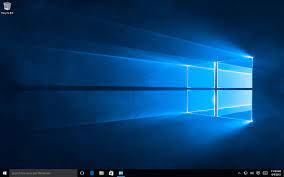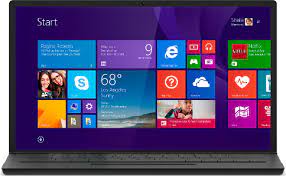Linux Mobile Integration: Bridging the Gap Between Desktop and Mobile
In today’s fast-paced digital world, mobile devices have become an integral part of our lives. From smartphones to tablets, these portable powerhouses have revolutionized the way we communicate, work, and access information on the go. At the same time, Linux has emerged as a robust and versatile operating system for desktop computers and servers. But what about integrating Linux into the mobile landscape? Is it possible to bridge the gap between desktop and mobile?
The answer is a resounding yes. Linux mobile integration has gained significant traction in recent years, offering users a seamless experience across devices. This integration brings together the power and flexibility of Linux with the convenience and mobility of smartphones and tablets.
One of the most notable examples of Linux mobile integration is Android. Based on the Linux kernel, Android has become one of the most widely used mobile operating systems globally. It offers a rich ecosystem of applications, customization options, and security features while leveraging the strengths of Linux.
But Android is not the only player in this game. Various open-source projects have emerged to bring full-fledged Linux distributions to mobile devices. These projects aim to provide users with a familiar desktop-like experience on their smartphones or tablets.
Ubuntu Touch is one such project that aims to create a unified experience across different form factors. It offers convergence capabilities that allow users to seamlessly switch between desktop and mobile modes when connecting their device to an external display or docking station. This enables users to enjoy a full desktop experience while using their smartphone as a computing device.
Another project worth mentioning is Sailfish OS, developed by Finnish company Jolla. Sailfish OS embraces open-source principles while offering a unique user interface that focuses on ease of use and multitasking capabilities. With its compatibility with Android apps, Sailfish OS provides users with access to a vast library of applications while maintaining its distinct identity as a Linux-based operating system.
Linux mobile integration goes beyond just operating systems. It extends to applications and services as well. Many popular Linux desktop applications have been adapted or developed specifically for mobile platforms, ensuring a consistent experience across devices. This allows users to seamlessly transition from their desktop to their mobile device without compromising functionality or productivity.
Moreover, cloud-based services have played a crucial role in bridging the gap between Linux desktop and mobile environments. Services like Nextcloud and ownCloud provide users with secure file synchronization, collaboration tools, and seamless access to their data across devices. These services, combined with Linux mobile integration, empower users to work efficiently regardless of the device they are using.
In conclusion, Linux mobile integration has come a long way in bringing together the power of Linux with the convenience of mobile devices. Whether it’s through projects like Ubuntu Touch or Sailfish OS, or through the adaptation of popular applications and cloud-based services, users now have the ability to seamlessly transition between their desktop and mobile environments.
As technology continues to evolve, we can expect even deeper integration between Linux and mobile platforms. The future holds exciting possibilities for a unified computing experience that transcends traditional boundaries. So whether you’re a Linux enthusiast or a mobile user looking for more flexibility and control over your devices, keep an eye on the ever-evolving landscape of Linux mobile integration – it’s only getting better from here.
Frequently Asked Questions about Linux Mobile Integration in English (UK)
- Can I replace Android with Linux?
- How to connect mobile with Linux?
- Does Linux work on mobile?
- Is there a mobile version of Linux?
Can I replace Android with Linux?
Yes, it is possible to replace Android with a Linux-based operating system on certain devices. However, it’s important to note that this process may require technical expertise and can vary depending on the device model and manufacturer. Additionally, replacing the operating system on a mobile device can void warranties and may have implications for device compatibility and functionality.
There are several Linux-based mobile operating systems available that can potentially replace Android. Projects such as Ubuntu Touch, Sailfish OS, and postmarketOS offer alternative options for users who prefer a Linux environment on their mobile devices. These operating systems aim to provide a more open-source and customizable experience while leveraging the power of Linux.
Before attempting to replace Android with a Linux-based operating system, it is advisable to thoroughly research the specific requirements and compatibility for your device. This includes checking if there are official builds or community-supported ports available for your device model. It’s also crucial to back up any important data before proceeding with any modifications.
If you are comfortable with technical processes such as unlocking bootloaders, flashing custom recoveries, or installing custom ROMs, you may be able to proceed with replacing Android with a Linux-based alternative. However, it is strongly recommended that you follow official documentation or seek guidance from experienced community members who have successfully performed similar installations.
Ultimately, replacing Android with Linux requires careful consideration of the potential risks and rewards involved. It’s essential to understand the implications for device functionality, warranty coverage, and ongoing support before proceeding with any modifications.
How to connect mobile with Linux?
Connecting your mobile device with Linux is a fairly straightforward process. Here are a few methods you can use to establish a connection:
USB Cable:
– Connect your mobile device to your Linux computer using a USB cable.
– On your mobile device, enable USB debugging mode. This option is usually found in the developer options section of your device’s settings.
– On your Linux computer, ensure that the necessary drivers are installed. Most modern Linux distributions have built-in support for popular mobile devices.
– Once connected, you can access your mobile device’s storage, transfer files, and perform other operations through the file manager on your Linux computer.
Wireless Connection:
– Ensure that both your mobile device and Linux computer are connected to the same Wi-Fi network.
– On your mobile device, go to the settings and enable wireless file transfer or media sharing options. The exact location of these settings may vary depending on your device and operating system version.
– Install an application on your Linux computer that supports wireless file transfer between devices. Some popular options include KDE Connect, GSConnect (for GNOME-based desktop environments), or Airdroid (for general wireless file transfer).
– Follow the instructions provided by the application to establish a connection between your mobile device and Linux computer. This usually involves scanning a QR code or entering a passcode.
– Once connected, you can transfer files wirelessly, send SMS messages from your desktop, receive notifications, and perform other tasks depending on the capabilities of the application.
Bluetooth:
– Enable Bluetooth on both your mobile device and Linux computer.
– Pair your mobile device with your Linux computer by following the pairing instructions specific to each operating system.
– Once paired, you can use Bluetooth file transfer functionalities to exchange files between devices or utilize other Bluetooth-enabled features like tethering.
It’s important to note that the exact steps may vary slightly depending on your specific mobile device, Linux distribution, and desktop environment. Additionally, some devices may require additional software or drivers to establish a connection. However, the methods mentioned above should work for most modern devices and Linux distributions.
Always ensure that you are connecting your mobile device to a trusted and secure Linux computer to protect your data and privacy.
Does Linux work on mobile?
Yes, Linux does work on mobile devices. Linux-based operating systems have been successfully adapted and optimized for mobile platforms, providing users with a range of features and functionalities. One of the most prominent examples is Android, which is built on the Linux kernel and has become the most widely used mobile operating system globally.
Android offers a user-friendly interface, a vast ecosystem of applications, and seamless integration with Google services. It powers millions of smartphones and tablets worldwide, providing users with a powerful and customizable mobile experience.
In addition to Android, there are also other Linux-based mobile operating systems available. Projects like Ubuntu Touch and Sailfish OS aim to bring full-fledged Linux distributions to mobile devices. These operating systems offer unique features such as convergence capabilities that allow users to switch between desktop and mobile modes when connecting their device to an external display or docking station.
Linux on mobile devices provides users with access to a wide range of open-source applications and tools. It allows for customization, security enhancements, and compatibility with various hardware configurations.
It’s important to note that while Linux-based operating systems are available for mobile devices, not all smartphones or tablets can run them out-of-the-box. Compatibility depends on factors such as hardware support, device manufacturer support, and community development efforts.
Overall, Linux has made significant strides in the mobile space, offering users an alternative to proprietary operating systems. The availability of Linux-based options provides more choice and flexibility for those looking for a different mobile experience based on open-source principles.
Is there a mobile version of Linux?
Yes, there are mobile versions of Linux available. One of the most prominent examples is Android, which is based on the Linux kernel. Android has become the dominant mobile operating system worldwide, powering a vast range of smartphones and tablets.
In addition to Android, there are also other Linux-based mobile operating systems that offer a more traditional desktop-like experience on mobile devices. Projects like Ubuntu Touch and Sailfish OS aim to bring full-fledged Linux distributions to smartphones and tablets, providing users with a familiar interface and access to a wide range of applications.
These Linux-based mobile operating systems offer features such as customization options, security enhancements, and compatibility with desktop Linux applications. They aim to bridge the gap between desktop and mobile environments, allowing users to have a consistent experience across different form factors.
While Android remains the most widely used mobile version of Linux, these alternative Linux-based mobile operating systems provide users with additional choices and options when it comes to their mobile devices.






